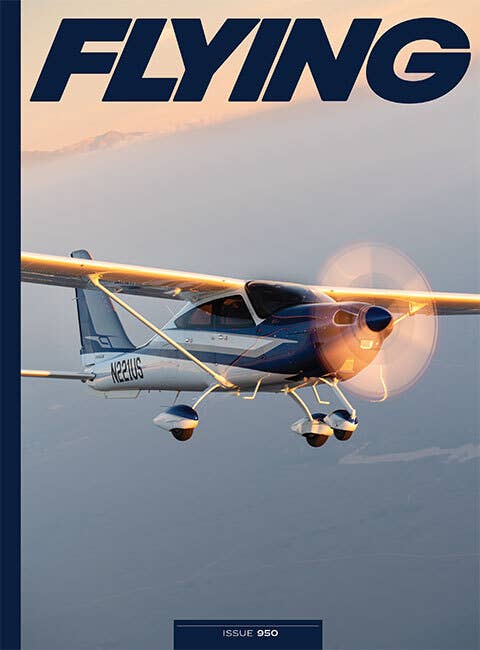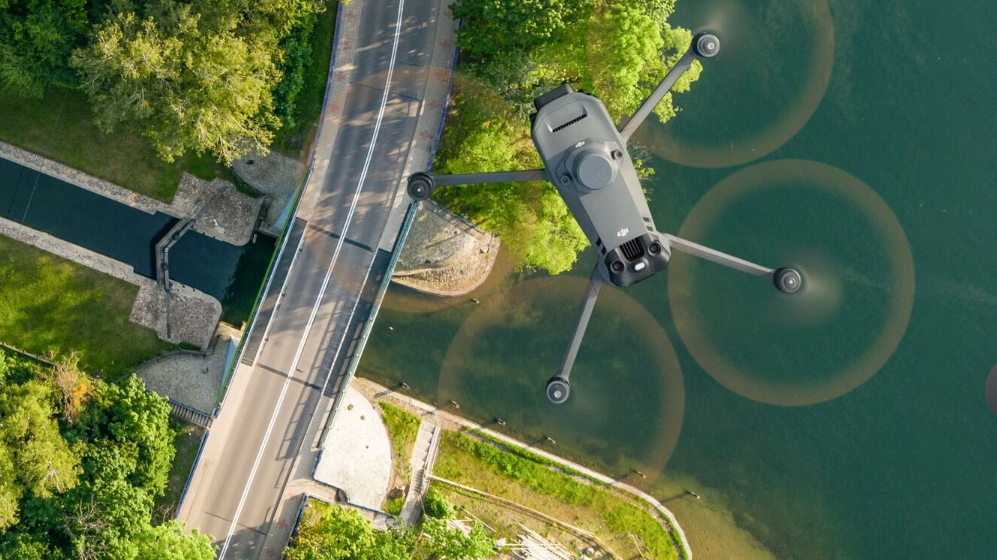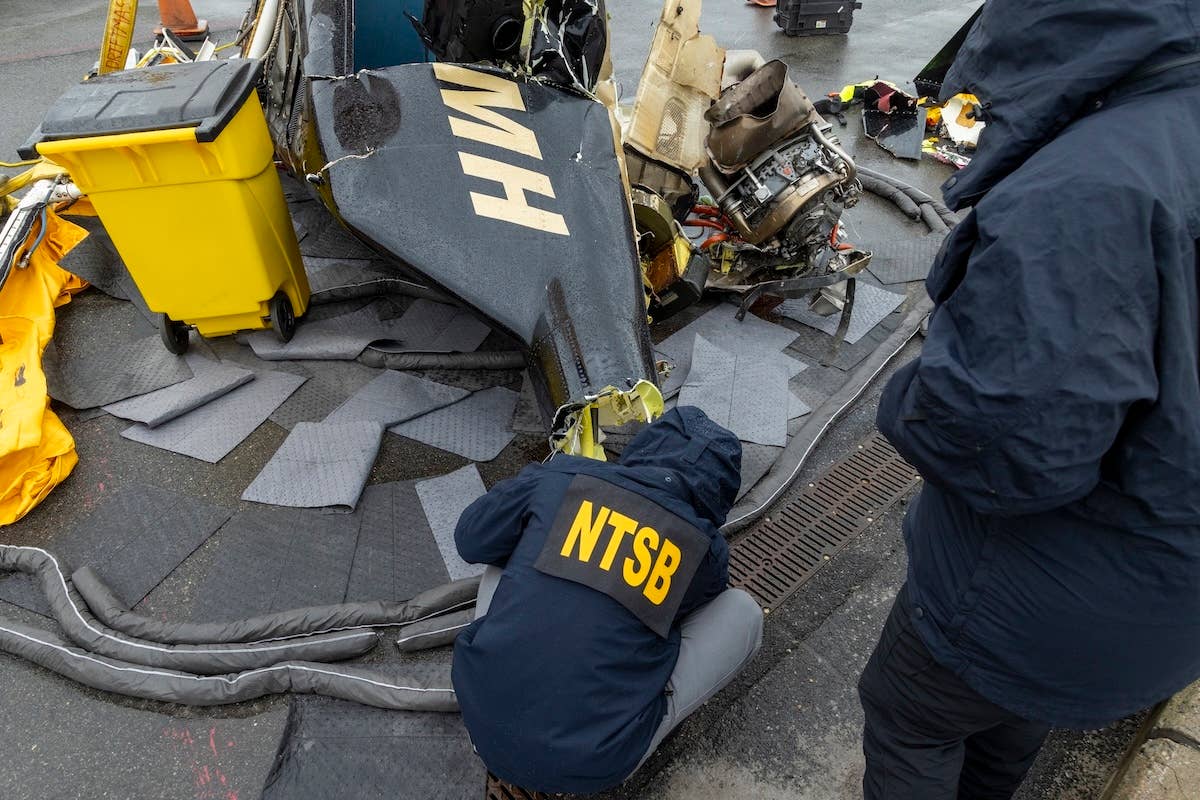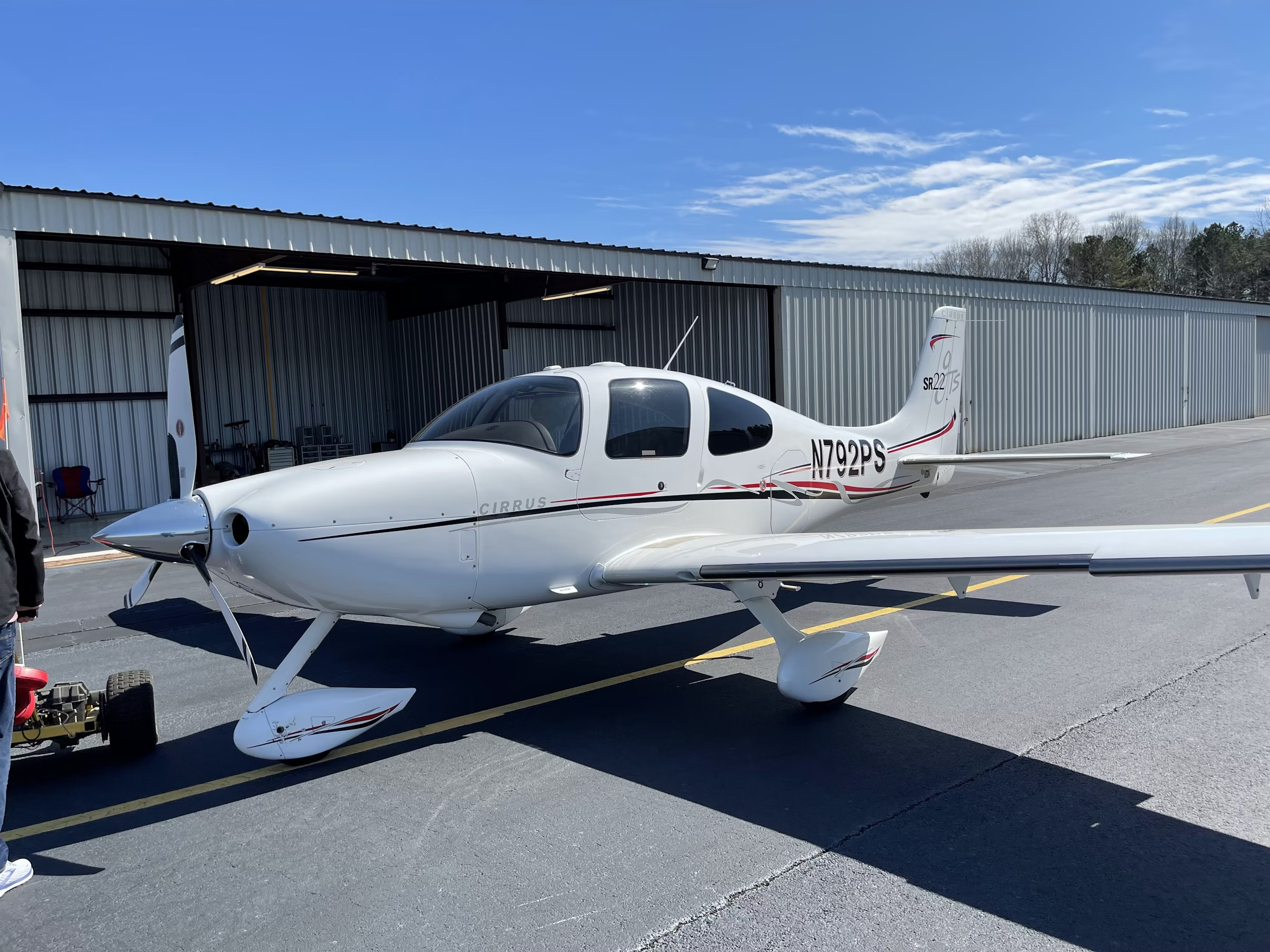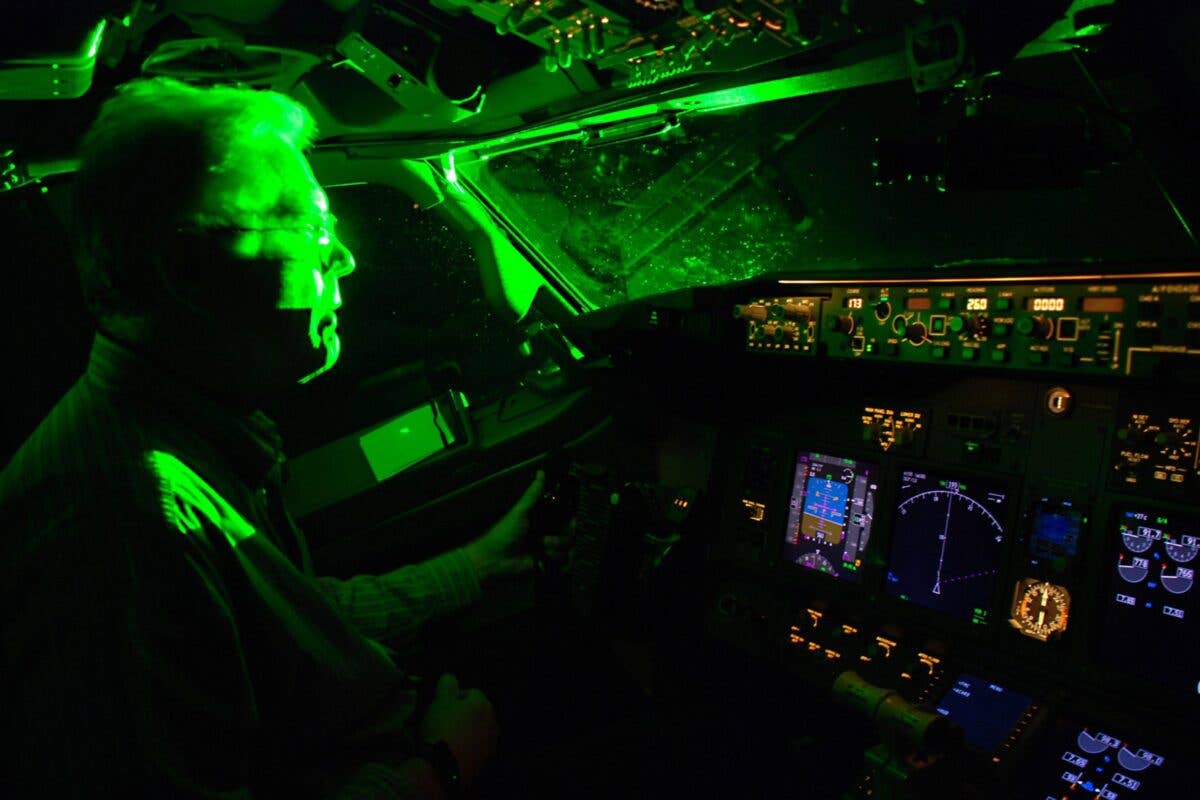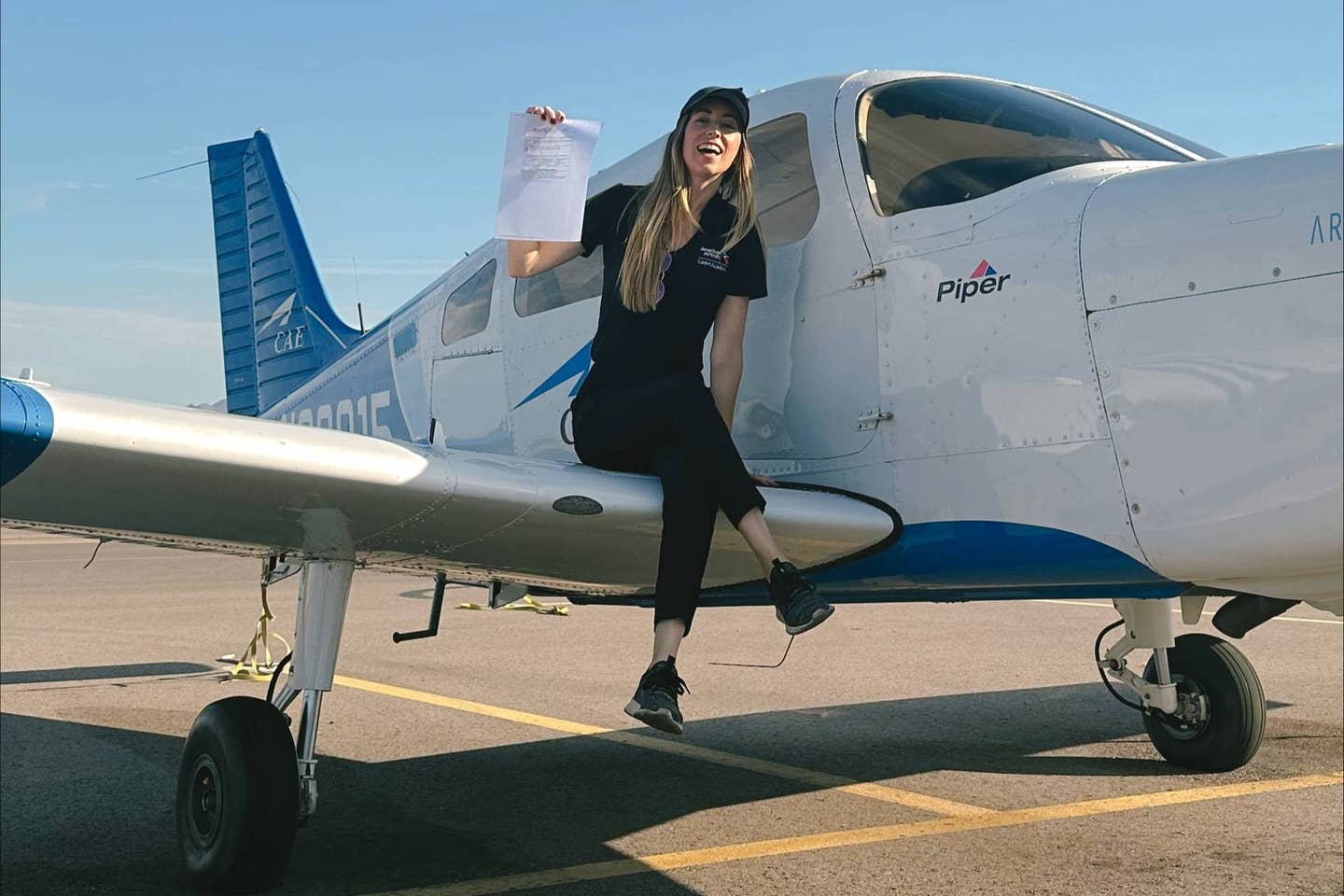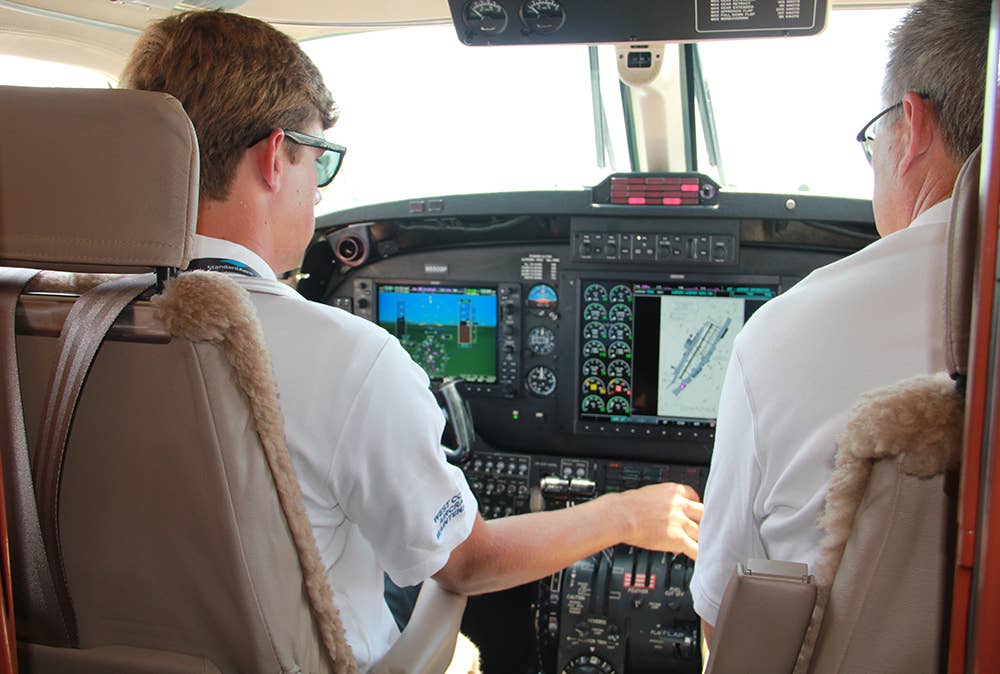A Pilot’s Fueling Mystery Explained
Pilot recalls a lesson learned about tanks from a dead stick landing.

Harrowing experience teaches pilot a valuable lesson—always check your tanks. [Illustration: Joel Kimmel]
Aviation has always been a part of my life.
My father owned multiple airplanes over the years, including a Beech Staggerwing (which I never saw), a Ryan Navion, turbo Apache, Twin Bonanza 1, Twin Bonanza 2 (H50), Commander 680FLP, Commander 680V (with the “Century” conversion installed), and finally a Twin Commander 690B. He was in the Canadian Air Force as a World War II radar service technician. He loved aviation and KF Aerospace started out of his hangar at Kelowna International Airport (CYLW) in British Columbia.
While attending college in Southern California in the mid-’70s, I got my private and instrument ratings at Hollywood Burbank Airport (KBUR), and worked on my multi-engine endorsement (MEI) out of Long Beach Airport (KLGB). Along the way, I also received about 10 hours of rotary wing dual time and had the pleasure of doing aerobatics off the Palos Verdes peninsula.
If you're not already a subscriber, what are you waiting for? Subscribe today to get the issue as soon as it is released in either Print or Digital formats.
Subscribe NowFollowing a 10-year flying hiatus, I then decided to work on my Canadian license. I flew out of Vancouver International Airport (CYVR) and then Kugaaruk Airport (CYBB) in order to obtain a PPL with IFR and MEI ratings.
I had the bug big time and bought a 1973 Cessna P337 Skymaster. Although it had a lot of deferred maintenance, I got it sorted and really enjoyed the aircraft for almost four years. Capable of 200 knots at FL 200, the Skymaster was very handy for flying over the Rockies.
Ever since my father bought his second “T-Bone” (Twin Bonanza) H-50, our family has traveled to Idaho to enjoy skiing. The flight in question occurred after one of our Friday-to-Sunday ski trips. My wife and her two friends had joined us for the weekend, and we stayed at our family’s condo at the base of the lifts in Ketchum, Idaho.
Despite having my fuel gauges in the Skymaster overhauled, they still did not work properly and were essentially useless.
- READ MORE: Old Adage for Pilots Still Applies: See and Avoid
As I had seen my dad do for decades in his Commander, which included a Foxboro fuel totalizer, I calculated the fuel burn. This was my practice for some time, and I had a good handle on it. In this case, we departed Vancouver with full tanks, flew a short hop to Bellingham International Airport (KBLI) in Washington state to clear customs, and then went on to Friedman Memorial Airport (KSUN) in Idaho.
The plan for the Sunday return flight was to depart after a partial fill then stop for fuel along the way. I don’t remember exactly where, but it would give a chance for a stop to stretch our legs.
I ordered fuel from the FBO, paid, preflighted, and departed. Equipped with a high wing and a cavalier attitude, I did not inspect the fuel level in the tanks.
It was a beautiful day, and the scenery over the Sawtooth Mountains was awesome. Ragged and rugged, and with the sun illuminating behind them, they were a site to marvel.
As I remember, I had flight following and was VFR at 16,500 feet with a TAS of about 200 knots. I tended to run at 75 percent power—always in a hurry.
- READ MORE: The Wake: Invisible Gremlin Grabs Your Attention
My wife sat in the right seat next to me while her two friends were seated in the cabin.
Suddenly, one engine stopped—yikes! About a minute later, the second one quit. The first thing that happened was the pressurization stopped, and a bag of potato chips in the back seat popped with a big bang, scaring the women in the back.
I advised ATC we had no power. The controllers told me that the closest airport was Joseph, Oregon (KSJY). It was very close and easy to reach from my altitude. I set up for the landing and started the approach. I ended up a little fast and high, so I entered a slip—once again alarming the back seaters.
We landed with just enough energy to taxi off the active runway. Since this was about 1990, there were no cell phones. Joseph also offered no services or taxis, but we still decided to stay the night as our nerves were frayed. A friendly local called the police who gave us a ride to the motel.
- READ MORE: Dealing With In-Flight Incapacitation
With no fuel at Joseph, the next morning someone at the airport assisted with a couple of cans of fuel. We then flew the short hop to Wallow County and topped the tanks.
My theory and only viable conclusion is I did not get the fuel before leaving KSUN. There is no other explanation I could reconcile as to what had happened. Yet, the folks there assured me they did fuel, even showing me their logs afterward. To this day I still can’t explain it.
So, here’s what I learned about flying from that.
Always check your tanks. I built a small aluminum ladder to ensure I could always reach them. And in the old days, I would park my rental car to stand on the trunk to have a look
This column first appeared in the December Issue 953 of the FLYING print edition.

Sign-up for newsletters & special offers!
Get the latest FLYING stories & special offers delivered directly to your inbox

